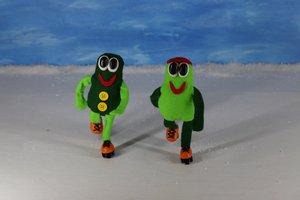Why I'm building this
I like working on robotics projects in my spare time, and one project I've wanted to do for a while has been building my own autonomous drone. I've worked on some systems like that in the past and they've been really cool to see in person. Along the way, I also started getting into flying FPV drones as well and realized that flying them manually is just as fun as seeing them fly themselves, so I wanted to see if I could combine the two in some way by possibly making a game out of it. Btw, definitely check out the work done at University of Zurich if you're interested in high-speed autonomous drones.


 Mike Rigsby
Mike Rigsby
 W. Jason Altice
W. Jason Altice